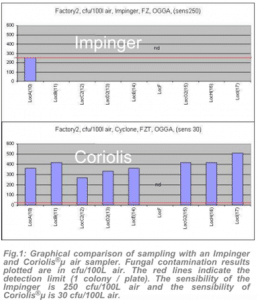Context
Monitoring of microbial contamination in the air around sensitive processing and packing lines has become an important part of safety food manufacturing (as bakery goods, cheese and other dairy products, fresh pasta, ready meals and chilled ready-to-eat foods). The methods routinely used for controlling the microbiological quality of the air in food factories have lagged behind those available for other applications (hospital and pharmaceutical sectors), with rudimentary qualitative methods still being widely used. Alternative methods are now available and are fully adapted to food manufacturers.
This study concerns the comparison of 2 different liquid air sampling methods in various locations of a food factory.
Materials
- Samplers : Coriolis ® µ, sterile cones vs Impinger.
- Liquid of sampling: 15 mL of physiologic salt
- +0.005% TritonX100 (FZT) or physiologic salt (FZ).
- OGGA (oxytetracyline yeast glucose agar) plates with low pH for detection of fungi and yeasts.
Protocol
- Coriolis ® µ: 100 L/min, 1 min sampling.
- Impinger: 12 L/min, 1 min sampling.
- Analyze: 1 mL of sampling medium spread on OGGA plates
- Incubation of plates at 25°C during 3 days.
Results
Nine samples are sampled in different rooms.
The fungal contamination measured by culture in OGGA media associated with Coriolis ® sampling gives an higher reading of fungi and yeast level than Impinger. The Coriolis ® µ is shown as the most sensitive air sampler.


